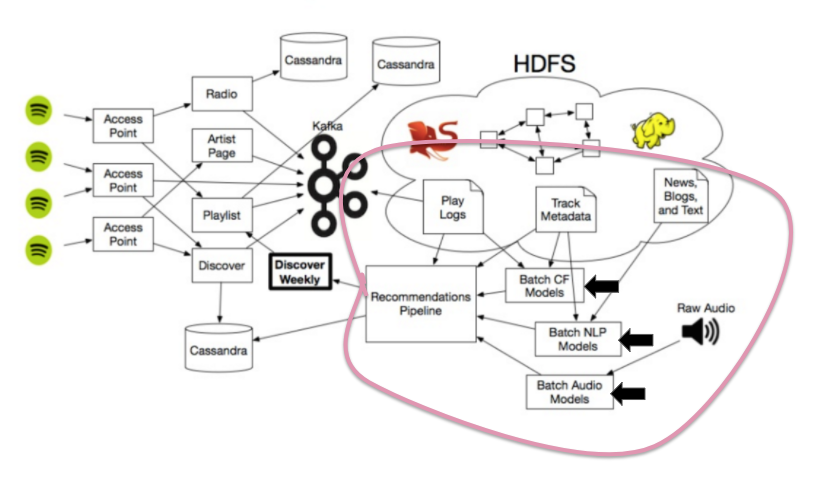Spotify’s Discover Weekly: How machine learning finds your new music (Hacker Noon)

(...) Back in the 2000s, Songza kicked off the online music curation scene using manual curation to create playlists for users. “Manual curation” meant that some team of “music experts” or other curators would put together playlists by hand that they thought sounded good, and then listeners would just listen to their playlists. (Later, Beats Music would employ this same strategy.) Manual curation worked okay, but it was manual and simple, and therefore it couldn’t take into account the nuance of each listener’s individual music taste.
Like Songza, Pandora was also one of the original players in the music curation scene. It employed a slightly more advanced approach, instead manually tagging attributes of songs. This meant a group of people listened to music, chose a bunch of descriptive words for each track, and tagged the tracks with those words. Then, Pandora’s code could simply filter for certain tags to make playlists of similar-sounding music.
Around that same time, a music intelligence agency from the MIT Media Lab called The Echo Nest was born, which took a radically more advanced approach to personalized music. The Echo Nest used algorithms to analyze the audio and textual content of music, allowing it to perform music identification, personalized recommendation, playlist creation, and analysis.
Finally, taking yet another different approach is Last.fm, which still exists today and uses a process called collaborative filtering to identify music its users might like. More on that in a moment.
So if that’s how other music curation services have done recommendations, how does Spotify come up with their magic engine, which seem to nail individual users’ tastes so much more accurately than any of the other services?
Spotify’s 3 Types of Recommendation Models
Spotify actually doesn’t use a single revolutionary recommendation model — instead, they mix together some of the best strategies used by other services to create its own uniquely powerful Discovery engine.
In 2014, Spotify actually bought The Echo Nest to gain access to their data and algorithms surrounding audio and text analysis, and they also use collaborative filtering algorithms similar to those used at Last.fm.
Therefore, to create Discover Weekly, there are three main types of recommendation models that Spotify employs:
- Collaborative Filtering models (i.e. the ones that Last.fm originally used), which work by analyzing your behavior and others’ behavior.
- Natural Language Processing (NLP) models, which work by analyzing text.
- Audio models, which work by analyzing the raw audio tracks themselves.
(...)

